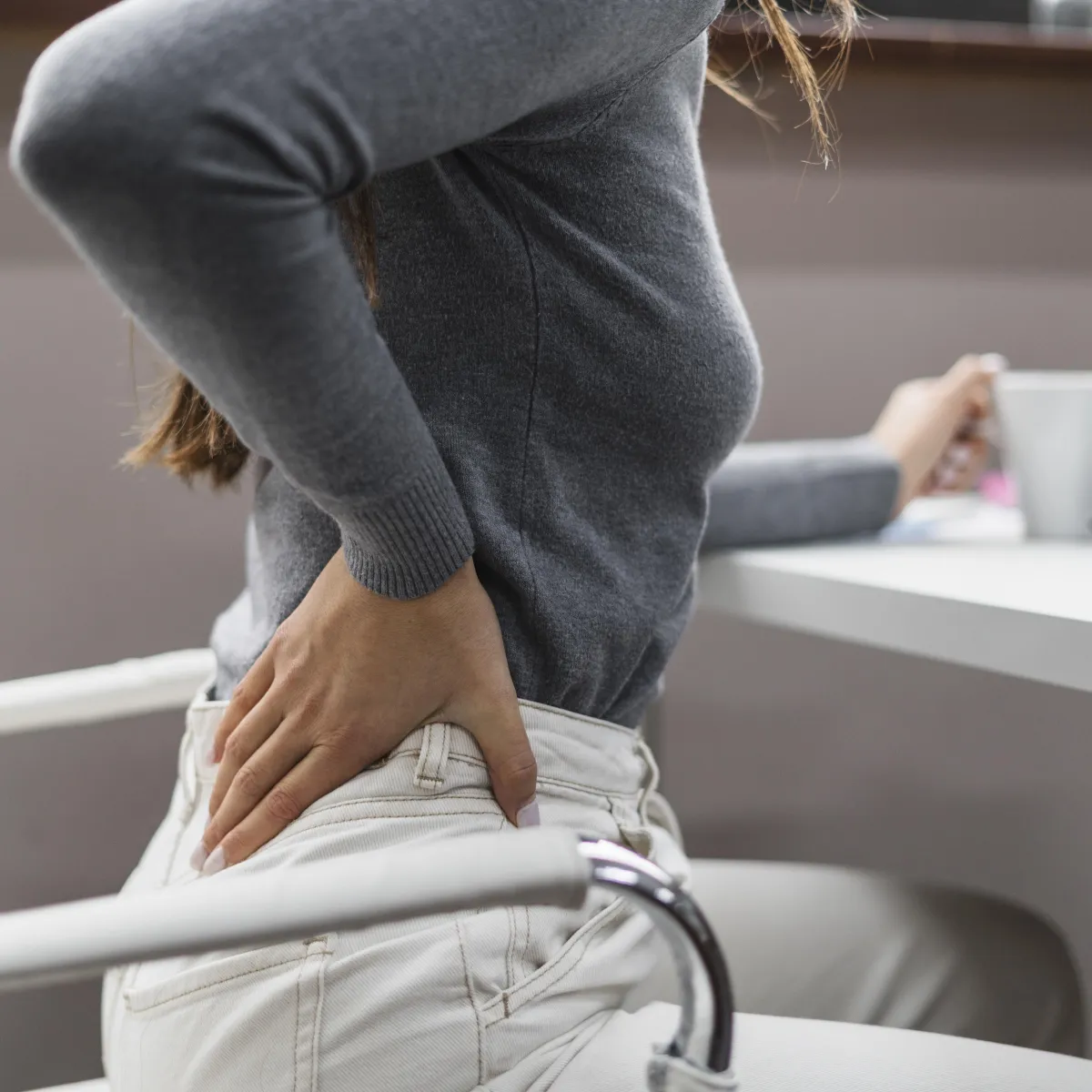
The Link Between Poor Posture & Hip Pain
If you’ve ever found yourself slouching at your desk or sinking into the couch after a long day, you may not realize the impact your posture is having on your body. Poor posture isn’t just about how you look—it plays a significant role in hip and lower back pain.
When your body is out of alignment, certain muscles become tight while others weaken, leading to imbalances that put unnecessary stress on your spine, hips, and surrounding joints. Over time, this can result in chronic discomfort, reduced mobility, and even injuries.
Let’s dive into how poor posture contributes to hip and lower back pain—and, more importantly, what you can do to fix it.

How Poor Posture Causes Hip and Lower Back Pain
1. Increased Pressure on the Lower Back
When you slouch or sit with a rounded back, the natural curve of your spine is compromised. This puts excessive strain on your lower back, leading to stiffness and discomfort. Over time, this poor alignment can contribute to conditions like:
Lumbar disc issues (herniation or degeneration)
Sciatica (nerve compression)
Chronic lower back tightness
2. Weak Core and Glute Muscles
Good posture relies on strong core and glute muscles to stabilize your pelvis and spine. However, prolonged sitting and slouching deactivate these muscles, causing:
Weak glutes – Without proper activation, your glutes can’t support your hips, leading to pain and overcompensation in the lower back.
Weak core – A weak core causes the lower back to absorb more strain, increasing the risk of pain and injuries.
3. Tight Hip Flexors and Pelvic Misalignment
Poor posture often includes an excessive forward tilt of the pelvis (anterior pelvic tilt), which results in:
Tight hip flexors – These muscles remain shortened, limiting hip mobility and pulling on the lower back.
Overstretched hamstrings – This creates instability and an increased risk of strains.
Increased spinal pressure – A misaligned pelvis alters spinal positioning, putting stress on the lumbar region.
4. Decreased Circulation and Joint Health
Sitting with poor posture for long hours reduces blood flow, which can:
Contribute to joint stiffness and reduced mobility
Slow down healing from minor strains and injuries
Lead to inflammation and discomfort in the hips and lower back
How to Improve Posture and Relieve Pain
The GOOD NEWS?
Small adjustments to your posture and daily habits can significantly reduce hip and lower back pain. Remember our stretch and strengthen perspective. Here’s how:
1. Maintain Proper Sitting Posture
When sitting for long periods, make sure to:
✔ Sit with your back straight and shoulders relaxed.
✔ Keep feet flat on the floor, knees at a 90-degree angle.
✔ Support your lower back with a cushion or lumbar roll.
✔ Keep your computer screen at eye level to avoid hunching forward.
2. Strengthen Key Muscle Groups
Building strength in the muscles that support your posture can prevent pain and improve stability. Focus on:
Glute Activation – Try squats, bridges, and hip thrusts to strengthen your glutes.
Core Stability – Planks, bird dogs, and dead bugs help reinforce spinal alignment.
Postural Muscles – Rows, face pulls, and back extensions improve back strength and support.

3. Stretch Tight Muscles
Loosening tight muscles restores balance and mobility. Incorporate these types of movements:
Hip Flexor Stretch – Lunge stretch or couch stretch to counteract tightness.
Hamstring Stretch – Forward fold or seated hamstring stretch for flexibility.
Cat-Cow Stretch – Helps improve spinal mobility and reduce lower back tension.
4. Move More Frequently
Avoid long periods of sitting by:
Standing up every 30-60 minutes
Taking short walks throughout the day
Using a standing desk if possible
Stretching during work breaks
5. Be Mindful of Your Posture While Standing and Walking
✔ Stand tall with shoulders back and core engaged.
✔ Keep weight evenly distributed between both feet.
✔ Avoid slouching or leaning forward when walking.
Poor posture is a silent culprit that can contribute to hip and lower back pain, but with awareness and consistent effort, you can correct it. By strengthening weak muscles, stretching tight areas, and making simple daily adjustments, you can alleviate discomfort and prevent future pain.
Which also decides your quality of life.
Your body thrives on movement and balance—so sit tall, move often, and prioritize your posture. Your hips and lower back will thank you!
Remember the quality of our lives is directly proportional to how well our bodies function!
